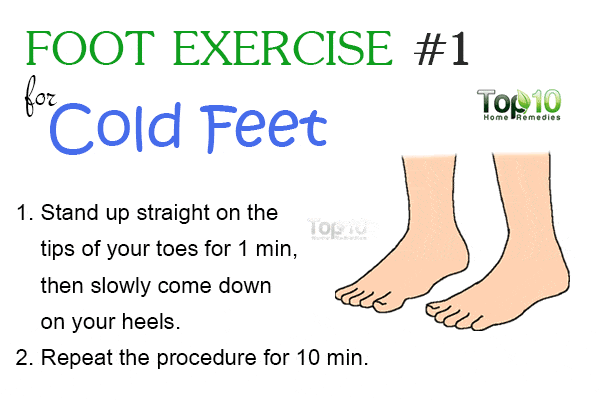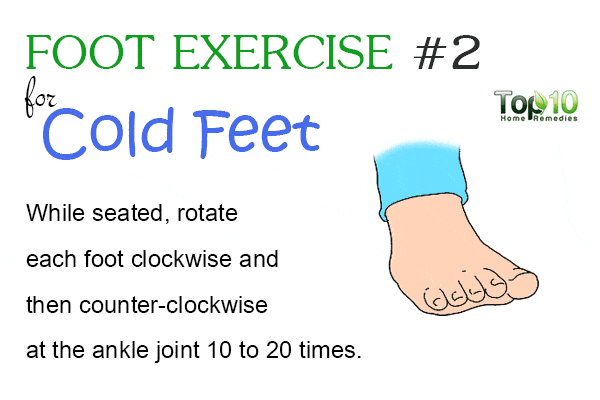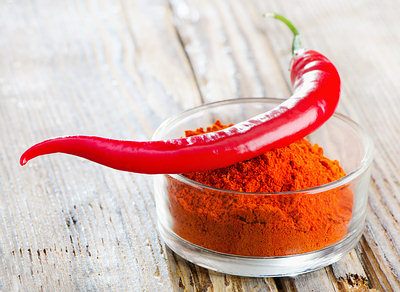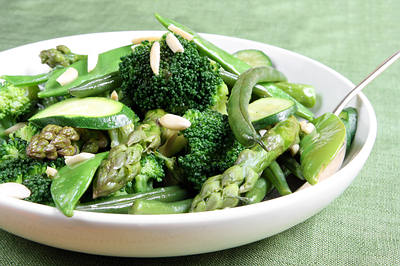Cold feet can be quite a common problem in people with poor blood circulation.
Physiologically, your feet get cold when inadequate oxygen and blood supply reach the legs due to poor blood circulation. When the circulation improves, the problem goes away.
However, persistent cold extremities can also be a symptom of other health problems, such as anemia, chronic fatigue syndrome, restless legs syndrome, peripheral neuropathy or nerve damage, peripheral vascular disease, diabetes, hypothyroidism, Raynaud’s disease and hypothermia.
Nutritional deficiencies, alcohol abuse and excessive smoking are also contributing factors in cold feet.
If cold feet are accompanied by additional symptoms like changes in skin color, numbness or tingling sensations, open sores or blisters, and tightened or hardened skin, seek medical attention immediately.
As the reasons for cold feet differ from person to person, consult a doctor for proper diagnosis if you have this problem frequently. In the meantime, you can try some simple and effective home remedies for relief.

Here are the top 10 home remedies for cold feet.

Plus, regular foot massage will help keep your feet healthy and free from many kinds of foot problems.

Hydrotherapy utilizes both cold and warm water soaks. The warm water soak helps improve circulation, while the cold water soak helps reduce symptoms.
Foot Exercise #1

Stand up straight on the tips of your toes for 1 minute, then slowly come down on your heels. Repeat the procedure for 10 minutes.
Foot Exercise #2

While seated, rotate each foot clockwise and then counter-clockwise at the ankle joint 10 to 20 times.
Foot Exercise #3

Use your toes to pick up a piece of cloth or some other object from the floor. Repeat several times.
Perform any of these exercises to restore warmth when you feel your feet getting cold.

Magnesium deficiency is one of the causes of cold feet as well as hands.

Cayenne pepper contains a compound called capsaicin that helps improve blood flow throughout the body, including your feet. It will help keep your feet warm and provide relief from symptoms like swelling and tingling sensations in the legs.

Walking barefoot on grass early in the morning is one of the best ways to boost circulation in your feet. This simple exercise is very good for treating cold feet. Moreover, walking strengthens and stretches the muscles, tendons and ligaments in your feet, ankles and calves.
Plus, when you walk barefoot on grass in the early morning sun, your body produces vitamin D. Having low vitamin D increases the likelihood of becoming anemic and having cold hands and feet.
Start your day walking barefoot on grass for 30 minutes to enjoy good circulation and overall health.

Those suffering from iron-deficiency anemia often have cold hands and feet. This happens because blood with a low hemoglobin level can’t deliver a proper oxygen supply to various organs and tissues.
Women between the ages of 19 and 50 need 18 mg of iron daily, while men in the same age category need 8 mg daily.

Magnesium is another nutrient required for good circulation and absorption of vitamin D. Without enough magnesium, you are more likely to suffer from cold feet as well as hands.
The body cannot store magnesium for very long, so it is essential to include magnesium-rich foods regularly in your diet.
Adult women need up to 300 mg of magnesium daily, and men require up to 400 mg daily.
Source Click here
Physiologically, your feet get cold when inadequate oxygen and blood supply reach the legs due to poor blood circulation. When the circulation improves, the problem goes away.
However, persistent cold extremities can also be a symptom of other health problems, such as anemia, chronic fatigue syndrome, restless legs syndrome, peripheral neuropathy or nerve damage, peripheral vascular disease, diabetes, hypothyroidism, Raynaud’s disease and hypothermia.
Nutritional deficiencies, alcohol abuse and excessive smoking are also contributing factors in cold feet.
If cold feet are accompanied by additional symptoms like changes in skin color, numbness or tingling sensations, open sores or blisters, and tightened or hardened skin, seek medical attention immediately.
As the reasons for cold feet differ from person to person, consult a doctor for proper diagnosis if you have this problem frequently. In the meantime, you can try some simple and effective home remedies for relief.

Here are the top 10 home remedies for cold feet.
Contents
1. Warm Oil Massage
Massaging your feet is a simple and therapeutic way to restore warmth. It stimulates blood flow to your extremities.
Plus, regular foot massage will help keep your feet healthy and free from many kinds of foot problems.
- Warm some olive, coconut or sesame oil in the microwave for a few seconds.
- Apply this warm oil on one of your cold feet.
- Use gentle but firm pressure with your fingers to massage from toe to ankle for 10 minutes.
- Repeat with the other foot.
- After the massage, put on cotton socks.
- Do this daily before going to bed and, if needed, once again during the day.
2. Hydrotherapy
Hydrotherapy is one of the simplest options that you can try at home to restore warmth to your feet.
Hydrotherapy utilizes both cold and warm water soaks. The warm water soak helps improve circulation, while the cold water soak helps reduce symptoms.
- Fill 2 foot tubs or basins – one with cold water and the other with warm water.
- Sit in a comfortable position, and soak your feet in cold water for 2 minutes.
- Then, switch to the warm water basin for 1 minute.
- Continue alternating between the two basins for 15 to 20 minutes.
- Pat dry immediately and put on warm socks.
- Repeat a few times daily until you get relief.
3. Foot Exercises
Exercising your feet is essential to keep the blood flowing continuously and keep your feet warm. Foot exercises also help strengthen blood vessels. For example, you can walk alternately on your toes and then your heels for 10 to 15 minutes. A few more exercises are:Foot Exercise #1

Stand up straight on the tips of your toes for 1 minute, then slowly come down on your heels. Repeat the procedure for 10 minutes.
Foot Exercise #2

While seated, rotate each foot clockwise and then counter-clockwise at the ankle joint 10 to 20 times.
Foot Exercise #3

Use your toes to pick up a piece of cloth or some other object from the floor. Repeat several times.
Perform any of these exercises to restore warmth when you feel your feet getting cold.
4. Epsom Salt
Another simple way to make your feet warm is an Epsom salt soak. The heat of the warm water will have a warming effect, while the magnesium sulfate present in Epsom salt will provide magnesium to the body.
Magnesium deficiency is one of the causes of cold feet as well as hands.
- Mix ½ cup of Epsom salt in a small tub filled with warm water.
- Stir until the salt is dissolved.
- Soak your feet in it for 15 to 20 minutes.
- Repeat this remedy twice a week.
5. Ginger
Ginger promotes blood circulation and can help combat cold extremities. It contains compounds like gingerols and zingerone that have a warming effect on the body. Plus, it can reduce the risk of blood clots.- Simmer 1 tablespoon of sliced ginger in 2 cups of water for 10 minutes. Strain, add a little raw honey and drink it 2 or 3 times a day.
- Boil a pot of water with a handful of ginger slices. Allow it to cool, then soak your feet in this solution for 15 minutes, twice daily.
- Another option is to take ginger supplements, after consulting your doctor.
6. Green Tea
Green tea is considered a valuable natural cure for cold feet. Drinking green tea improves the functioning of the vessels that carry blood through the body, including your feet.- Drink 2 to 3 cups of green tea throughout the day. To make green tea, add 1 teaspoon of green tea leaves to a cup of hot water, cover and steep for 5 minutes. Strain, sweeten with honey and drink it.
- You can also steep 3 or 4 green tea bags in a large pot of hot water for 10 minutes. Remove the tea bags and soak your feet in it for 10 minutes. Repeat twice daily.
7. Cayenne Pepper

Cayenne pepper contains a compound called capsaicin that helps improve blood flow throughout the body, including your feet. It will help keep your feet warm and provide relief from symptoms like swelling and tingling sensations in the legs.
- Evenly spread 1 teaspoon of cayenne pepper in a pair of thick socks. Put on a thin pair of socks, then put the thick socks sprinkled with cayenne pepper over them.
- You can also massage the soles of your feet with an over-the-counter cream containing capsaicin.
- Another option is to take a supplement, after consulting your doctor.
8. Walk on Grass

Walking barefoot on grass early in the morning is one of the best ways to boost circulation in your feet. This simple exercise is very good for treating cold feet. Moreover, walking strengthens and stretches the muscles, tendons and ligaments in your feet, ankles and calves.
Plus, when you walk barefoot on grass in the early morning sun, your body produces vitamin D. Having low vitamin D increases the likelihood of becoming anemic and having cold hands and feet.
Start your day walking barefoot on grass for 30 minutes to enjoy good circulation and overall health.
9. Increase Iron Intake

Those suffering from iron-deficiency anemia often have cold hands and feet. This happens because blood with a low hemoglobin level can’t deliver a proper oxygen supply to various organs and tissues.
Women between the ages of 19 and 50 need 18 mg of iron daily, while men in the same age category need 8 mg daily.
- To fight iron deficiency, eat iron-rich foods like dates, apples, lentils, liver, red meat, spinach, soybean flour, tofu, almonds, dried apricots, olives, fortified breakfast cereals, watercress, oysters and asparagus.
- You can opt to take an iron supplement, after consulting your doctor for the proper dosage. High doses of iron can be harmful to your body.
10. Eat Magnesium-Rich Foods

Magnesium is another nutrient required for good circulation and absorption of vitamin D. Without enough magnesium, you are more likely to suffer from cold feet as well as hands.
The body cannot store magnesium for very long, so it is essential to include magnesium-rich foods regularly in your diet.
Adult women need up to 300 mg of magnesium daily, and men require up to 400 mg daily.
- Some good sources of magnesium-rich foods are spinach, Swiss chard, turnips, mustard greens, broccoli, seaweed, avocados, cucumbers, green beans, baked potatoes, whole grains, pumpkin seeds, sesame seeds and almonds.
- You can opt to take supplements, after consulting your doctor.
- While sitting on a chair, do not let your feet dangle without support. Place a stool under your feet to rest them on.
- Try aerobic activities, such as running, hiking and cycling, to promote proper circulation and prevent cold feet.
- During the winter months, wear warm socks to keep your feet comfortable and warm.
- Air-activated foot warmers can also be used to warm up cold feet.
- If you smoke, quit smoking as it can cause poor blood circulation.
- Eat foods rich in omega-3 fatty acids, such as salmon, walnuts, flaxseeds, pumpkin seeds and more, to prevent blocked arteries and poor circulation.
- Alternative therapies like yoga and acupuncture are also helpful.
- Keep your cholesterol, blood pressure and blood sugar levels under control.
Source Click here
Comments
Post a Comment